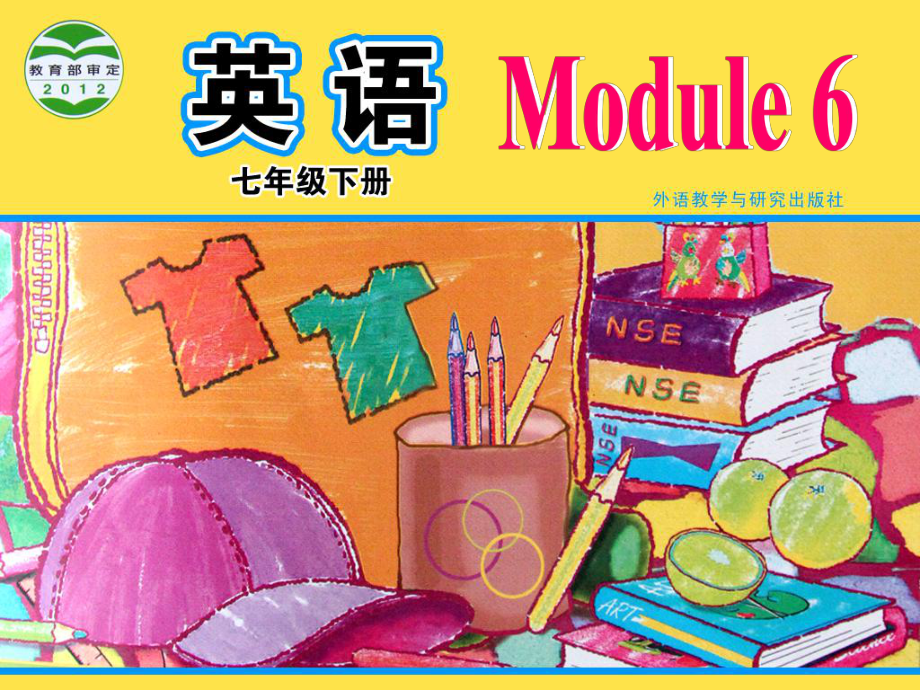《外研版初中英語(yǔ)七年級(jí)下冊(cè)Module 6Unit 1 Could you tell me how to get to the National Stadium課件》由會(huì)員分享���,可在線(xiàn)閱讀��,更多相關(guān)《外研版初中英語(yǔ)七年級(jí)下冊(cè)Module 6Unit 1 Could you tell me how to get to the National Stadium課件(41頁(yè)珍藏版)》請(qǐng)?jiān)谘b配圖網(wǎng)上搜索�。
1�����、Unit 1 Could you tell me how to get to the National Stadium?What is he doing in the street?He is asking the way.bankmuseumtouriststreetundergroundbookshopguidebookalongacrossoppositebankmuseumrestaurantstationabcdmuseumrestaurantstationbank3241along across cross opposite Can the tourist go to the Wa
2����、ngfujing Dajie?Yes, he can.1. How will the tourist get to Wangfujing Dajie from Tiananmen Square?Go across Dong Changan Jie, go along the street and turn left the third street on the left. 2. Where is the bookshop?The bookshop is just along Xi Changan Jie, on the right, opposite the bank.A policeman
3����、.3. Who does the tourist ask for the way to the National Stadium?tellnice1. along作介詞時(shí),意為作介詞時(shí)��,意為“沿著沿著”�����。 e.g. Go along the road and youll see it.2. across 和和 cross:(1)across為介詞����,表示(在表面)越為介詞��,表示(在表面)越過(guò)�����,橫穿過(guò)���,橫穿” ;cross為動(dòng)詞��,意為為動(dòng)詞���,意為“穿穿過(guò)�����,橫穿過(guò)�,橫穿”���。(2)across必須與動(dòng)詞連用�。必須與動(dòng)詞連用�����。cross不能不能與動(dòng)詞連用與動(dòng)詞連用。例如:�����。例如:run across3.
4�����、 Why not + v.?表示表示“為什么不為什么不呢���?呢��?” e.g. Why not go to the library?4. opposite是介詞,表示是介詞�����,表示“在在的對(duì)的對(duì) 面面”����。 e.g. The bank is opposite the bookshop.5. turn作動(dòng)詞時(shí)意為作動(dòng)詞時(shí)意為“換方向換方向”。要����。要表達(dá)表達(dá)“向左向左/右轉(zhuǎn)右轉(zhuǎn)”時(shí)���,用時(shí),用turn left / right���。e.g. Walk along the street and turn left when you see a park.【拓展【拓展】turn還可以作名詞��,意為還可以作名詞�,意為“
5�、順序;順序��;次序次序”��。e.g. John, its your turn to clean the classroom today.根據(jù)漢語(yǔ)意思完成下面的英語(yǔ)句子�����。根據(jù)漢語(yǔ)意思完成下面的英語(yǔ)句子��。在學(xué)校大門(mén)口處向右轉(zhuǎn)��。在學(xué)校大門(mén)口處向右轉(zhuǎn)��。_ at the school gate.Turn right 6. third是序數(shù)詞,表示是序數(shù)詞����,表示“第三第三”。Three是基數(shù)詞�����。序數(shù)詞要放在是基數(shù)詞�。序數(shù)詞要放在the的后面。的后面�。 e.g. the third street 7. Could you tell me how to get to + 地點(diǎn)地點(diǎn)? = Can you tell
6、me the way to + 地點(diǎn)地點(diǎn)? = Where is + 地點(diǎn)地點(diǎn)?the way to意為意為“去去的路的路”����,后面常接表示地點(diǎn)的名詞后面常接表示地點(diǎn)的名詞。如果���。如果to后面接后面接地點(diǎn)副詞(如地點(diǎn)副詞(如here, there����,home)時(shí),)時(shí)����,則省略則省略to��。e.g. We dont know the way to the airport.根據(jù)漢語(yǔ)意思完成下面的英語(yǔ)句子根據(jù)漢語(yǔ)意思完成下面的英語(yǔ)句子���。約翰正在告訴我去圖書(shū)館的路。約翰正在告訴我去圖書(shū)館的路�����。John is telling me the _ the library.way to 8. take v. 搭乘���;
7��、搭乘�;乘坐�����;固定使用����;把乘坐;固定使用�;把(某人)帶往�;使(某人)到(某人)帶往����;使(某人)到 take bus/train/boat Can you take me to the bus station?1. _ me, is Wangfujing Dajie far from Tiananmen Square?2. Theres a bookshop near here. Whats the name of the _?3. Can a _ ask a _ the way to get to places in Beijing?could excuse policeman street t
8、ourist undergroundstreetpolicemantouristExcuse4. _ you tell me how to get to the National Stadium?5. Wheres the _ station?Could undergroundcould excuse policeman street tourist underground1. Excuse me, is Wangfujing Dajie far from Tiananmen Square?2. Theres a bookshop near here. Whats the name of th
9�����、e street?3. Can a tourist ask a policeman the way to get to places in Beijing?4. Could you tell me how to get to the National Stadium?5. Wheres the underground station?1. Can you tell me the way to Wangfujing Dajie?2. Go across Dong Changan Jie,go along the street and turn left.3. Is there a booksho
10�����、p near here?4. Could you tell me how to get to the National Museum?5. Go along the street and youll see an underground station.Ask Answer Can you tell me the way to ?Go across - Wheres the market?- Its on - How do I get there?- Go along 表達(dá)方位的介詞表達(dá)方位的介詞1. in front of和和in the front of都意為都意為“在在前面前面”��,但它們
11��、的含義有區(qū)別����。,但它們的含義有區(qū)別��。 in front of意為意為“在某范圍以外的前面在某范圍以外的前面”����。 e.g. Therere some trees in front of the building. in the front of意為意為“在某范圍以?xún)?nèi)的在某范圍以?xún)?nèi)的前面前面”。 e.g. A little girl is standing in the front of the bus.2. behind意為意為“在在后面后面”����。 e.g. John sits behind his grandmother.3. on the left意為意為“在左邊在左邊”;on the rig
12��、ht意為意為“在右邊在右邊”�����。 e.g. In Hong Kong, people drive on the left. Is the hospital on the right, Mary?4. next to意為意為“與與緊挨著緊挨著”�。 e.g. The bank is next to the supermarket.5. between意為意為“在在(兩者兩者)之間之間”,它常與它常與and搭配使用�����,即搭配使用�����,即between . and .�����,意為,意為“在在和和之間之間” e.g. Theres a long chair between the two desks. Linda i
13�、s sitting between her mother and her father.6. opposite意為意為“在在的對(duì)面的對(duì)面”。 e.g. The school is opposite the cinema.根據(jù)句意及漢語(yǔ)提示寫(xiě)出所缺詞語(yǔ)��。根據(jù)句意及漢語(yǔ)提示寫(xiě)出所缺詞語(yǔ)��。1. A car is _(在在前面前面) the shop. 2. Bobs basketball is _(在在后面后面) the door. 3. Go across the street, and youll see a bicycle shop _(在右邊在右邊). in front of behind
14����、on the right 4. The train station is _(緊挨著緊挨著) the bank.5. The restaurant is _(在在之之間間) the market and the bookshop. 6. The shop is _(在在的對(duì)面的對(duì)面) the police station.next to between opposite 問(wèn)路的句型:?jiǎn)柭返木湫停篧here is ?How can I go/get to ?Excuse me. Can you tell me the way to ?Could you show me the way to ? 指路的句型:指路的句型:Go along the street and youll see Turn left/Turn right.Turn left into Take the underground/Take a bus/taxi.Follow the road 方位介詞的用法。方位介詞的用法��。 across, along, near, opposite, on 問(wèn)路和指路的句子���。問(wèn)路和指路的句子��。 編寫(xiě)一個(gè)對(duì)話(huà)�,介紹從學(xué)校去你的家的編寫(xiě)一個(gè)對(duì)話(huà)��,介紹從學(xué)校去你的家的路線(xiàn)圖���。路線(xiàn)圖�。
 外研版初中英語(yǔ)七年級(jí)下冊(cè)Module 6Unit 1 Could you tell me how to get to the National Stadium課件
外研版初中英語(yǔ)七年級(jí)下冊(cè)Module 6Unit 1 Could you tell me how to get to the National Stadium課件

